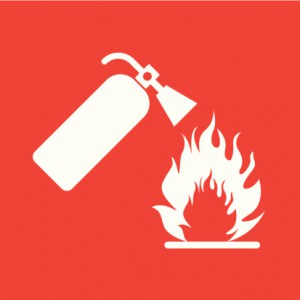Hover-boards are the hot new toy, but how safe are they? These self-balancing scooters are on the top of every kid’s (and some adult’s) list to Santa this year, but as these unregulated travel devices rise in popularity, so too have trips to the Emergency Department due to hover board related accidents.
 Hospital ERs across the country are reporting a series of injuries, from scraps and contusions, to fractures and sprains, to even head injuries resulting from hover-board accidents. These toys can reach maximum speeds of 15 miles an hour and falls from them can cause significant harm. All you have to do is go to You Tube, Twitter, or Instagram and type in #HoverBoardFalls to see how dangerous hover-boards can be if the rider (or parent, if the rider is a child) does not take proper precautions.
Hospital ERs across the country are reporting a series of injuries, from scraps and contusions, to fractures and sprains, to even head injuries resulting from hover-board accidents. These toys can reach maximum speeds of 15 miles an hour and falls from them can cause significant harm. All you have to do is go to You Tube, Twitter, or Instagram and type in #HoverBoardFalls to see how dangerous hover-boards can be if the rider (or parent, if the rider is a child) does not take proper precautions.
Hover-board price and quality vary greatly so read online reviews from previous buyers before purchasing one. Also, because they are so new to the market, there are no national safety standards for hover-boards. Until regulations are in place, riders should follow the same safety guidelines they would for riding a bicycle, including wearing a helmet, elbow and knee pads, wrist guards and/or gloves.
Other tips to follow before getting on a hover-board include carefully reading the instruction manual to learn how to properly operate it. Also make sure to adhere to all safety rules, including age and weight recommendations.
It is a good idea to have a “spotter” with you when you first attempt to ride your hover-board in case you fall. Lastly, riders should not use their hover boards in the street or on public walkways to avoid seriously injuring themselves or others.
Like everything else, hover-boards can be a lot of fun if they are used responsibly. Happy and safe hovering!
All content of this newsletter is intended for general information purposes only and is not intended or implied to be a substitute for professional medical advice, diagnosis or treatment. Please consult a medical professional before adopting any of the suggestions on this page. You must never disregard professional medical advice or delay seeking medical treatment based upon any content of this newsletter. PROMPTLY CONSULT YOUR PHYSICIAN OR CALL 911 IF YOU BELIEVE YOU HAVE A MEDICAL EMERGENCY.


 We tend to cook and decorate more during the holiday season. These activities if not exercised with caution and safety can lead to burn injuries, which is one of the most common problems emergency rooms face at this time of year. Doctors are requesting that people pay close attention to potential hazards that can result in burn injuries and avoid them by following these safety guidelines:
We tend to cook and decorate more during the holiday season. These activities if not exercised with caution and safety can lead to burn injuries, which is one of the most common problems emergency rooms face at this time of year. Doctors are requesting that people pay close attention to potential hazards that can result in burn injuries and avoid them by following these safety guidelines: The holidays are supposed to be about joy and merriment, but for many they can become a very stressful time of year.
The holidays are supposed to be about joy and merriment, but for many they can become a very stressful time of year. The holiday season is the best time of the year to buy toys for children. However, parents are often overwhelmed by a larger selection and choosing the best toy can become challenging. The most important thing to remember when choosing toys for toddlers is picking toys that are safe and appropriate for their age.
The holiday season is the best time of the year to buy toys for children. However, parents are often overwhelmed by a larger selection and choosing the best toy can become challenging. The most important thing to remember when choosing toys for toddlers is picking toys that are safe and appropriate for their age. The practice of acupuncture originated in China and can be traced as far back as 2,500 years ago. According to traditional Chinese medicine, disease and illness occurs when the energy (Chi) which flows throughout the body along pathways (meridians) is blocked or interrupted. Inserting very thin needles into the skin at strategic points on the body will unblock that energy, allowing it to flow freely and restore balance.
The practice of acupuncture originated in China and can be traced as far back as 2,500 years ago. According to traditional Chinese medicine, disease and illness occurs when the energy (Chi) which flows throughout the body along pathways (meridians) is blocked or interrupted. Inserting very thin needles into the skin at strategic points on the body will unblock that energy, allowing it to flow freely and restore balance. y calories and although there is no direct link between alcohol and obesity, research has shown it can be a reason to why people may place more on their plate than necessary. Trusted websites, such as Medicine.net reported, “Studies have shown that in the short term, alcohol stimulates food intake and can also increase feelings of hunger. Having your judgment impaired and stimulating your appetite is a recipe for failure if you are trying to follow a weight-loss plan.” A Margarita with chips and salsa may sound appetizing, but the calories in a Margarita drink can be as high as 270 empty calories; a reason the bowl of chips seem endless. Here are few other drinks and their calories to keep in mind the next time you’re out for lunch, dinner or happy hour:
y calories and although there is no direct link between alcohol and obesity, research has shown it can be a reason to why people may place more on their plate than necessary. Trusted websites, such as Medicine.net reported, “Studies have shown that in the short term, alcohol stimulates food intake and can also increase feelings of hunger. Having your judgment impaired and stimulating your appetite is a recipe for failure if you are trying to follow a weight-loss plan.” A Margarita with chips and salsa may sound appetizing, but the calories in a Margarita drink can be as high as 270 empty calories; a reason the bowl of chips seem endless. Here are few other drinks and their calories to keep in mind the next time you’re out for lunch, dinner or happy hour:

 Thinking about escaping the germy, New York City winter season? This is a popular time of year to hop a flight to a tropical location, but did you know that air travelers are actually up to 100 times more likely to catch a cold or the flu while flying than during normal day-to-day activities.
Thinking about escaping the germy, New York City winter season? This is a popular time of year to hop a flight to a tropical location, but did you know that air travelers are actually up to 100 times more likely to catch a cold or the flu while flying than during normal day-to-day activities.